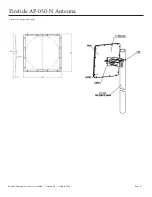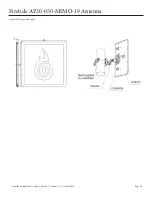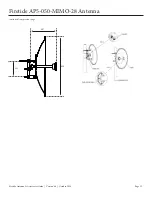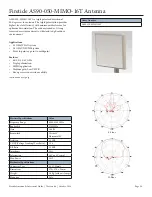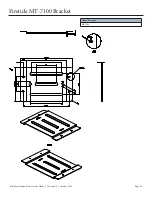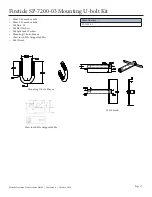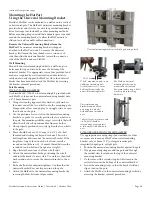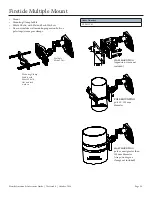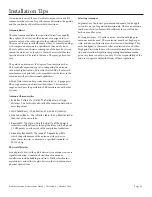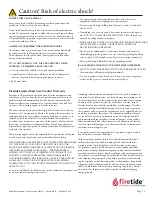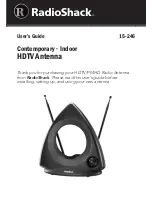
Page 31.
24
Firetide Accessory Guide
Version 3.01 19 June 2009
Installation Tips
An antenna is one of the most critical components in any RF
communications system. Its performance determines the quality
and the continuity of data flow in both directions.
Antenna Basics
The ideal antenna radiates the signal in all directions equally,
like a sphere. Most real-world antennas are designed to con-
centrate or focus the radio signal in the preferred direction(s).
The areas of focus are called beams or lobes. A common analogy
is to compare an antenna to a sprinkler at the end of a hose.
There is only so much water coming out of the hose but we can
spread the water out or focus it to throw the water farther in a
specific direction. The total is the same. The spray pattern can
vary.
The gain of an antenna is the degree of concentration it has.
This is usually expressed as a ratio, comparing the antenna
to the ideal spherical one. This ratio is called ‘dBi’. Real-world
measurements of gain takes into consideration the losses in the
antenna as well as its directional capabilities.
A High Gain Antenna has greater directivity, i.e. it propagates
RF energy more in one direction than others. This increases
range and reduces the possibility of RF interference with other
systems.
Antenna Characteristics
t3BEJBUJPO1BUUFSO 'BS'JFME5IFåFMEQBUUFSOBUMBSHF
distances. The far-field is also called the radiation field and is
most important.
t.BJO-PCF#FBN5IFEJSFDUJPOPGNBYJNVNJOUFOTJUZ
t4JEF-PCFT#FBN5IFSBEJBUJPOMPCFTJOBOZEJSFDUJPOPUIFS
than that of the main lobe.
t#FBNXJEUI5IFBOHMFXIFSFUIFNBKPSJUZPGUIFQPXFSJT
radiated, usually defined as the angle between two half-power
(-3 dB) points on either side of the main lobe of radiation.
t'SFRVFODZ#BOEXJEUI5IFSBOHFPGGSFRVFODJFTXJUIJO
which the performance of the antenna, with respect to
some characteristics, conforms to a specified standard. i.e.
802.11a,b&g
Selecting Antennas
In general, use the lowest-gain antenna adequate for the appli-
cation. Do not go for gain indiscriminately. Choose an antenna
that has an elevation beamwidth sufficient to cover all nodes,
both near and far away.
For long distances - 1/2 mile or more - directional high gain
antennas must be used. These antennas must be as high as pos-
sible, and above obstructions such as trees and buildings. They
must be aligned so their main lobes are directed at each other.
High gain directionals have to be carefully aimed both in direc-
tion and elevation. Regulations regarding maximum antenna
gains vary from country to country. It is the responsibility of the
end user to operate within the limits of these regulations.
Firetide Antenna & Accessories Guide | Version 4.0 | October 2014
Physical Obstacles
Any physical object in the path between two antennas can cause
signal attenuation. Common obstructions for outdoor
installations include buildings and trees. Walls, whiteboards,
metal objects and reflective glass between the two antennas are
physical obstructions.

